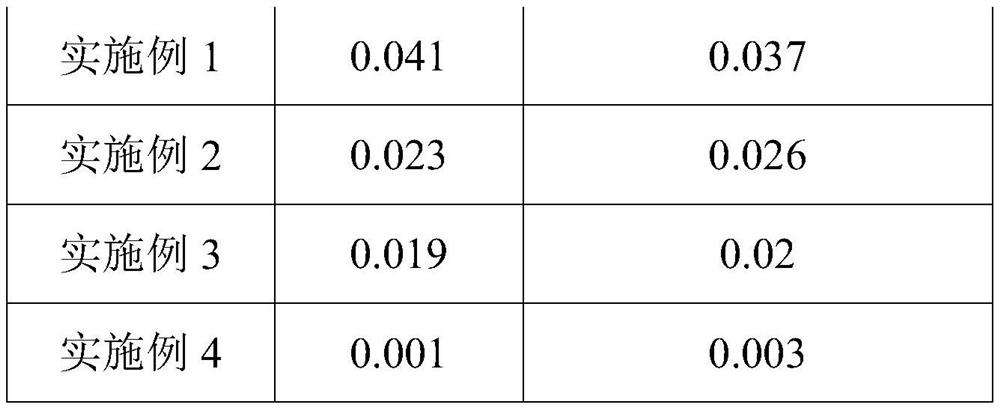A biomedical wound dressing
A biomedicine and wound technology, applied in dressings, medical science, viscous dressings, etc., can solve the problems of ineffective release of medicinal ingredients, unfavorable wound air permeability, poor anti-inflammatory and disinfection effects, etc., to reduce the formation of scars, Prevents wound inflammation and enhances cell regeneration
- Summary
- Abstract
- Description
- Claims
- Application Information
AI Technical Summary
Problems solved by technology
Method used
Image
Examples
Embodiment 1
[0043] The hydrophilic film drug layer is prepared by the following mass content ratio:
[0044] Chitosan content 10%, sulfamethoxazole content 1%, dexamethasone content 1%, borneol content 0.5%, safflower content 2%, trimethoprim content 1%, rifamycin content 1%, peppermint Brain 1%, Clindamycin Hydrochloride 13%, Nano Silver Particles 1%, Carboxyvinyl Polymer and / or Hydroxypropyl Methyl Cellulose 10%, Trehalose 1%, Carotenoids 1%, the solution prepared after the reaction, the solution is drip-coated on the polylactic acid layer, and dried to obtain a hydrophilic film drug layer;
[0045] Paste the dried polylactic acid receiving layer carrying the hydrophilic film drug layer on the water-absorbing layer, paste the water-absorbing layer on the base layer, and stick the adhesive layer on the edge of the base layer and the edge of the water-absorbing layer In between, prepare the dressing.
Embodiment 2
[0047] The hydrophilic film drug layer is prepared by the following mass content ratio:
[0048] Chitosan content 15%, sulfamethoxazole content 5%, dexamethasone content 5%, borneol content 2%, safflower content 3.5%, trimethoprim content 3%, rifamycin content 2.5%, mint content Brain content 2%, clindamycin hydrochloride content 3%, nano silver particle content 8%, carboxyvinyl polymer and / or hydroxypropyl methylcellulose content 35%, trehalose content 5%, carotenoid content 5%, the solution prepared after the reaction, the solution is drip-coated on the polylactic acid layer, and dried to obtain a hydrophilic film drug layer;
[0049] Paste the dried polylactic acid receiving layer carrying the hydrophilic film drug layer on the water-absorbing layer, paste the water-absorbing layer on the base layer, and stick the adhesive layer on the edge of the base layer and the edge of the water-absorbing layer In between, prepare the dressing.
Embodiment 3
[0051] The hydrophilic film drug layer is prepared by the following mass content ratio:
[0052] Chitosan content 13%, sulfamethoxazole content 3%, dexamethasone content 3%, borneol content 1.5%, safflower content 3%, trimethoprim content 2%, rifamycin content 1.5%, mint content Brain content 1.5%, clindamycin hydrochloride content 1.5%, nano silver particle content 4%, carboxyvinyl polymer and / or hydroxypropyl methylcellulose content 13%, trehalose content 3%, carotenoid content 3%, the solution prepared after the reaction, the solution is drip-coated on the polylactic acid layer, and dried to obtain a hydrophilic film drug layer;
[0053] Paste the dried polylactic acid receiving layer carrying the hydrophilic film drug layer on the water-absorbing layer, paste the water-absorbing layer on the base layer, and stick the adhesive layer on the edge of the base layer and the edge of the water-absorbing layer In between, prepare the dressing.
PUM
| Property | Measurement | Unit |
|---|---|---|
| thickness | aaaaa | aaaaa |
Abstract
Description
Claims
Application Information
 Login to View More
Login to View More - R&D
- Intellectual Property
- Life Sciences
- Materials
- Tech Scout
- Unparalleled Data Quality
- Higher Quality Content
- 60% Fewer Hallucinations
Browse by: Latest US Patents, China's latest patents, Technical Efficacy Thesaurus, Application Domain, Technology Topic, Popular Technical Reports.
© 2025 PatSnap. All rights reserved.Legal|Privacy policy|Modern Slavery Act Transparency Statement|Sitemap|About US| Contact US: help@patsnap.com


